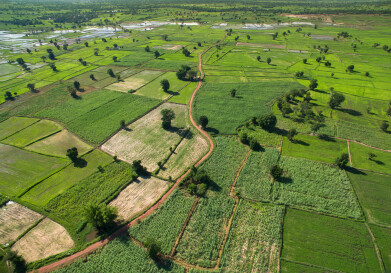Environmental laboratory
Could turning biodiversity into a financial asset prevent ecosystem collapse?
Jul 17 2024
The accelerating loss of biodiversity presents a critical challenge for global ecosystems and economies alike. Amid this crisis, the concept of transforming biodiversity into a financial asset emerges as a potentially powerful tool to halt and reverse ecosystem degradation. This approach involves creating financial instruments such as biodiversity credits, which can incentivize conservation efforts and integrate the value of nature into economic decision-making.
What are biodiversity credits?
Biodiversity credits are a form of nature-based financing that aims to quantify and monetize biodiversity gains. Unlike carbon credits, which represent a standardized metric of CO2e reduction, biodiversity credits must account for the complex and heterogeneous nature of ecosystems. They typically fall into two categories: result-focused and process-focused credits. Result-focused credits quantify specific biodiversity gains, while process-focused credits measure conservation efforts (e.g., hectares of land managed or years of commitment).
Financial models for pricing these credits consider various factors, including the costs of management, monitoring, and providing economic incentives to local communities. For instance, South Pole's model includes reverse calculations to cover all related expenses and provide returns, ensuring that biodiversity conservation is economically viable.
The integration of biodiversity considerations into financial portfolios is gaining traction. Tools like the UN-backed ENCORE biodiversity module allow banks and investors to assess the impact of their activities on biodiversity and identify pathways to mitigate these impacts. By analyzing the exposure of financial portfolios to biodiversity risks, institutions can direct investments toward more sustainable practices.
Financial institutions play a critical role in this paradigm shift. The Finance for Biodiversity Pledge, signed by numerous global financial institutions, commits to protecting and restoring biodiversity through finance activities and investments. This pledge, along with the EU Biodiversity Strategy for 2030, underscores the importance of incorporating biodiversity into institutional decision-making and promoting nature-based solutions.
While the financialization of biodiversity offers significant potential benefits, it is not without challenges. One major concern is the risk of market speculation and the creation of complex financial derivatives that could lead to unintended negative consequences. Ensuring that biodiversity credits serve their intended purpose without becoming tools for financial arbitrage is crucial. Furthermore, establishing standardized metrics and methodologies for biodiversity credits remains a complex task due to the diverse nature of ecosystems.
Biodiversity credits, if implemented effectively, can yield substantial ecological benefits by incentivizing conservation and restoration projects. These credits can help protect critical habitats, promote sustainable land management practices, and contribute to reversing biodiversity loss. However, the success of these initiatives depends on robust governance frameworks and the equitable distribution of benefits to local communities and land managers.
Turning biodiversity into a financial asset represents a promising strategy for addressing ecosystem collapse. By aligning financial incentives with conservation goals, it is possible to mobilize significant resources for biodiversity protection. However, achieving this requires careful design and implementation of biodiversity credits, strong regulatory oversight, and active engagement of all stakeholders.
Financial institutions, policymakers, and conservationists must work together to ensure that the financialization of biodiversity contributes to sustainable development and the preservation of our planet's natural heritage. As the world grapples with the dual crises of biodiversity loss and climate change, innovative financial mechanisms like biodiversity credits offer a viable pathway toward a more sustainable and resilient future.
Digital Edition
IET 35.2 March
April 2025
Air Monitoring - Probe Sampling in Hazardous Areas Under Extreme Conditions - New, Game-Changing Sensor for Methane Emissions - Blue Sky Thinking: a 50-year Retrospective on Technological Prog...
View all digital editions
Events
May 06 2025 Nuremberg, Germany
May 10 2025 Karachi, Pakistan
May 11 2025 Vienna, Austria
May 11 2025 Seoul, South Korea
Salon Analyse Industrielle & Instrumentation
May 14 2025 Paris, France








_(4427399123)-(2).jpg)




.jpg)





